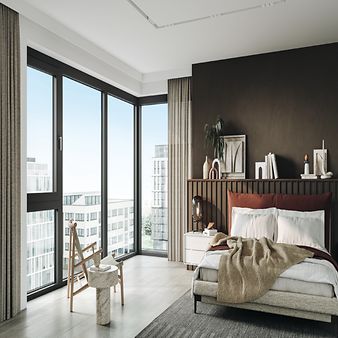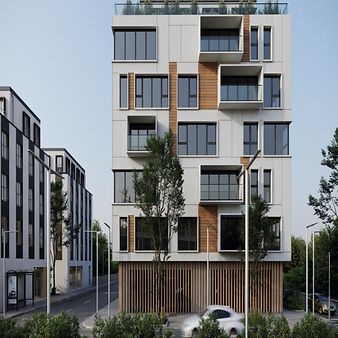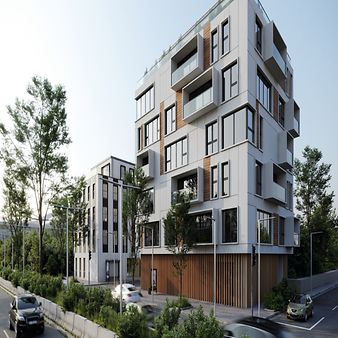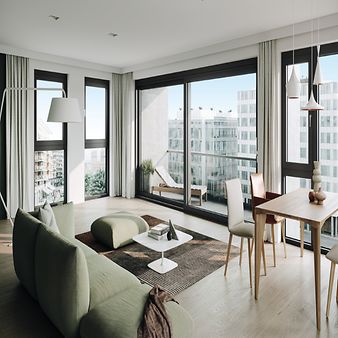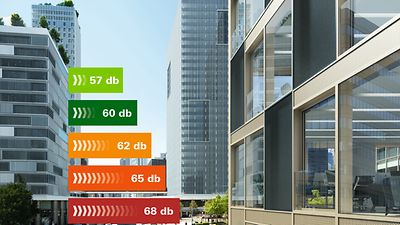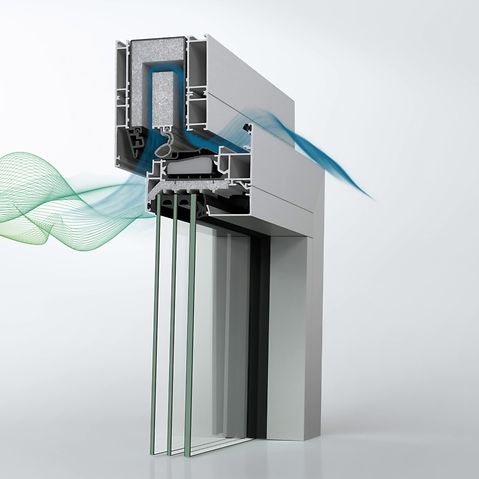
Schüco OpenSilent
Ventana con reducción acústica para una ventilación natural al tiempo que reduce el ruido del exterior
La vida urbana y el trabajo son una rutina para muchas personas. La reducción del ruido desempeña un papel importante en este sentido, ya que el ruido de la ciudad no sólo puede ser molesto, sino que también puede afectar a nuestra salud física y mental. El dilema nunca termina: ¿es mejor mantener la ventana cerrada para que no haya ruido? ¿O tolerar el ruido para ventilar la estancia?
OpenSilent resuelve este quebradero de cabeza: Las soluciones de reducción acústica de Schüco permiten la ventilación de forma natural con la ventana abierta, al tiempo que reducen la contaminación acústica procedente del exterior. Además de una solución de sistema monocapa, la gama también incluye diversas soluciones de proyecto, ventanas a medida y ventanas de tipo cajón que satisfacen estos requisitos.

¿Sabías que...?
Las ventanas con reducción de ruido y función de ventilación silenciosa tienen su origen en Hamburgo. Denominadas aquí ventanas HafenCity, se utilizan en edificios de oficinas y viviendas de la bulliciosa ciudad hanseática.
Reducción del ruido aunque las ventanas estén abiertas: El aire entra, el ruido queda fuera.
Especialmente en edificios residenciales y de oficinas situados en entornos muy ruidosos, como centros urbanos y zonas cercanas a aeropuertos o carreteras con mucho tráfico, la fachada del edificio requiere un buen nivel de reducción acústica. Las ventanas con reducción acústica desempeñan un papel clave a la hora de mantener el ruido fuera de los espacios de vida y de trabajo. Las soluciones de reducción acústica OpenSilent de Schüco no sólo reducen el sonido con la ventana cerrada, sino que también ventilan la habitación sin ruidos no deseados, lo que permite vivir y trabajar en paz.
Por ejemplo, cuando está abierta, la AWS 90 AC.SI reduce el sonido entre 31 y 34 dB, lo que corresponde a la clase 2 de reducción del ruido. Cuando está cerrada, la ventana alcanza incluso la clase de reducción acústica 5, es decir, una reducción de hasta 47 dB. Con nuestras soluciones de ventanas con cajón, la reducción es aún mayor. Por lo tanto, las soluciones OpenSilent proporcionan un confort total al usuario y, en caso necesario, también cumplen los estrictos requisitos de reducción acústica.
Experimente la Schüco AWS 90 AC.SI en acción con un solo clic.
Sound reduction classes for windows
To assess and categorise sound reduction windows and their noise-reducing performance, the Verein Deutscher Ingenieure (VDI) defines a total of six different sound reduction classes. The higher sound reduction class, the better sound reduction.
Conventional sound reduction windows only reduce ambient noise when closed. Meanwhile, even in the tilt position, Schüco OpenSilent solutions achieve a level of sound reduction that corresponds to sound reduction class 2 and thus to that of a typical insulating-glass window when closed. When closed, the Schüco sound reduction windows can even achieve class 5 sound reduction and are therefore also suitable for very loud environments.
Sound reduction class | Volume of traffic | Distance between the building and the road (in metres) | Sound reduction (in decibels) |
1 | Residential street (10-50 cars per hour) | More than 35m | 30-34 dB |
2 | Residential street (10-50 cars per hour) | 26-35m | 30-34 dB |
3 | Large residential street (50-200 cars per hour) | 26-35m | 35-39 dB |
4 | Main road (1.000-3.000 cars per hour) | 100-300m | 40-44 dB |
5 | Main road (1.000-3.000 cars per hour) | 36-100m | 45-49 dB |
6 | Motorway (3.000-5-000 cars per hour) | Less than 100m | > 50 dB |
- Material de trabajo (p.e. documentos para la especificación, objetos BIM, datos CAD, catálogos)
- Notas
- Contacto directo con Schüco

